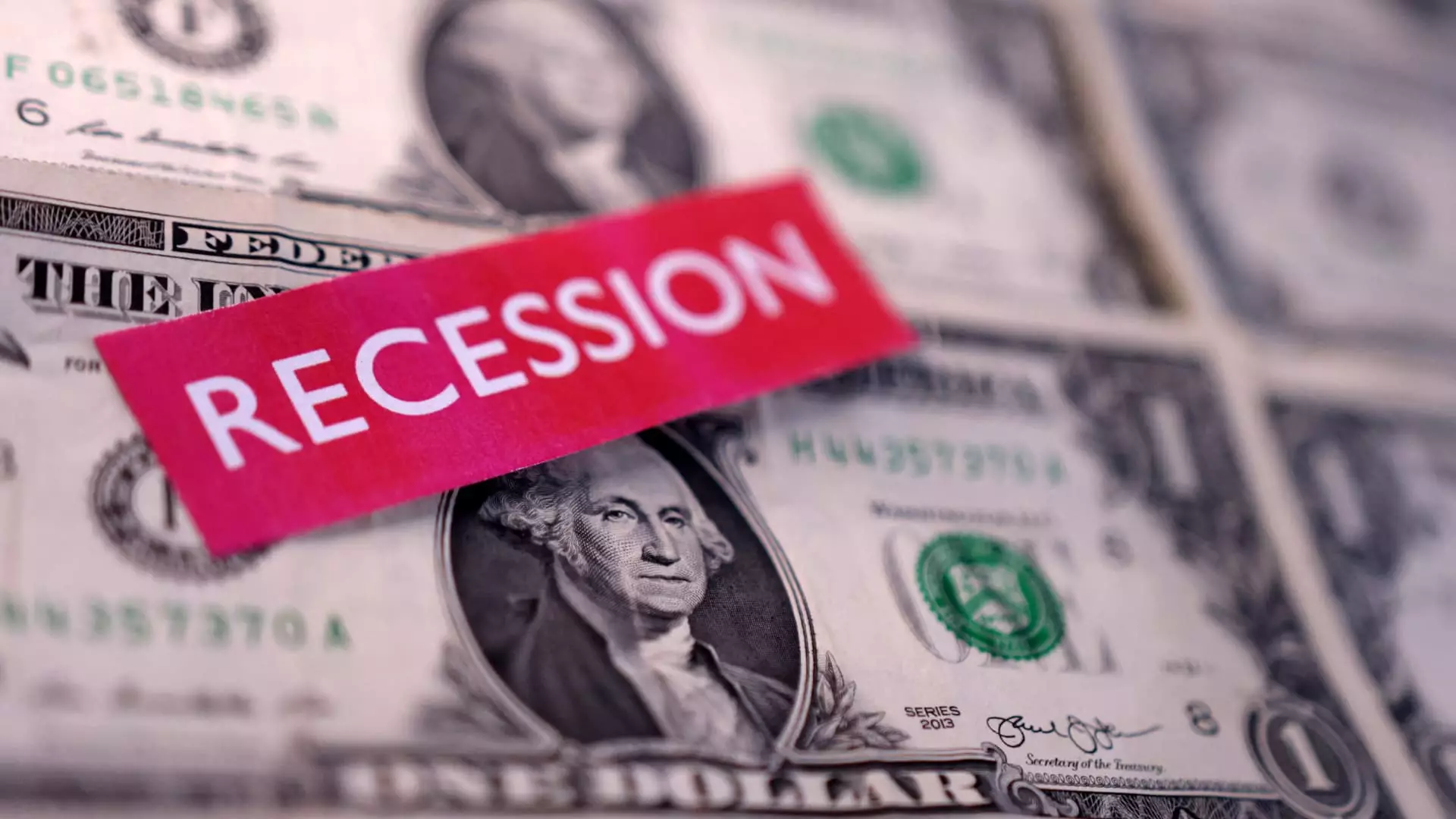As the U.S. economy continues to tread through turbulent waters, a recent Deutsche Bank survey reveals that there’s an unsettling 50% chance the country is edging toward a recession. With a probability of 43% for a downturn within the next year, this statistic strikes a chord of anxiety among the businesses and consumers alike. Despite the comforting whispers of low unemployment and moderate growth, the reality is far more complex and fraught with uncertainty. Individuals, from business leaders to everyday consumers, are sensing the storm clouds gathering on the economic horizon.
While it’s easy to dismiss anxiety as mere pessimism, the prevailing data points—rising inflation rates and foreboding growth estimates—tell a different story. Federal Reserve Chair Jerome Powell’s remarks highlight the conflicting nature of the current landscape. He maintains a positive outlook, characterizing the economy as “strong overall,” yet his words fail to mask the numbing fear that looms over the market. The acknowledgment of slower projected growth—now estimated at a mere 1.7% annualized gain—should ignite concern and not just the passive acceptance of “progress.”
Stagflation: A Scary Echo from the Past
One cannot help but wonder if we’re on the cusp of revisiting the dreaded specter of stagflation—characterized by stagnant economic growth, high inflation, and rising unemployment rates. Though many economists assert that a full-blown recurrence of the economic malaise from the early 1980s is unlikely, the very fact that it’s being discussed indicates a palpable sense of instability. The Federal Reserve’s adjustment for core inflation to 2.8%, well above its intended target of 2%, underlines a critical tension. The dilemma before policymakers now resembles a precarious balancing act: should the focus be on stimulating growth or curbing inflation?
Markets are undeniably jittery, and the warnings are amplifying. Jeffrey Gundlach, a prominent bond expert, places the chance of recession squarely in the 50% to 60% range. As investors react to the evolving narrative of tariff policies and the threat of significant economic deceleration, one must question the efficacy of current economic strategies. The discomforting oscillation between optimism and trepidation reflects the fragility of the situation rather than a foolproof recovery narrative.
The Tariff Trap: A Policy Dilemma
President Donald Trump’s tariffs emerge as a particularly significant factor in this economic quagmire. Recognized as a critical piece of the recession watch activated by UCLA Anderson, these tariffs have raised alarms about potential fallout for the economy. Clement Bohr’s assessment that a downturn could be a mere year or two away if aggressive tariff threats continue is both sobering and cautionary. The warnings extend beyond mere numbers; they offer a stark reminder of the intricate interplays between domestic policies and their expansive economic ramifications.
The implications are profound: a government that aggressively pursues its agenda may inadvertently sow the seeds for a profound economic collapse. The dialogue surrounding these tariffs speaks to a disconcerting reality: policymaking has the potential to be beneficial, yet it is equally capable of triggering dire consequences.
A Choice for the Future
In navigating these choppy economic waters, a choice looms large for policymakers: to prioritize short-term growth or long-term sustainability. The figures presented by Barclays indicating a growth rate of just 0.7%, dangerously close to recession territory, carve a worrisome trajectory. Emphasis on consumer and business sentiment as indicators of economic health highlights the need for confidence amid uncertainty.
Stagflation remains a haunting possibility, and its implications would stretch far beyond simple economic metrics—impacting the daily lives of Americans who are already grappling with rising costs and stagnant wages. As the Federal Reserve faces the daunting challenge of formulating an effective response, one can only hope that their decision-making does not become a case study in economic mismanagement, exacerbating the very issues they aim to resolve.
In the face of rising uncertainty, perhaps there lies the most important lesson: the economy is not merely a series of numbers and graphs, but a living organism that requires nurturing, foresight, and a willingness to ask the tough questions about policies that impact lives. The time for critical reflection and decisive action is now.


Leave a Reply